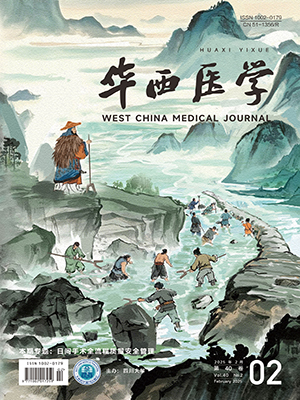| 1. |
Koo J, Ngan YK, Lam SK. Trends in hospital admission, perforation and mortality of peptic ulcer in Hong Kong from 1970 to 1980[J]. Gastroenterology, 1983, 84(6):1558-1562.
|
| 2. |
Gunshefski L, Flancbaum L, Brolin RE, et al. Changing patterns in perforated peptic ulcer disease[J]. Am Surg, 1990, 56(4):270-274.
|
| 3. |
Tsugawa K, Koyanagi N, Hashizume M, et al. The therapeutic strategies in performing emergency surgery for gastroduodenal ulcer perforation in 130 patients over 70 years of age[J]. Hepatogastroenterology, 2001, 48(37):156-162.
|
| 4. |
Bertleff MJ, Lange JF. Laparoscopic correction of perforated peptic ulcer:first choice? A review of literature[J]. Surg Endosc, 2010, 24(6):1231-1239.
|
| 5. |
Bertleff MJ, Halm JA, Bemelman WA, et al. Randomized clinical trial of laparoscopic versus open repair of the perforated peptic ulcer:the LAMA Trial[J]. World J Surg, 2009, 33(7):1368-1373.
|
| 6. |
丁杰, 廖国庆, 张忠民, 等.腹腔镜与开腹消化性溃疡穿孔修补术比较的Meta分析[J]. 中华胃肠外科杂志, 2011, 14(10):785-789.
|
| 7. |
Lunevicius R, Morkevicius M. Management strategies, early results, benefits, and risk factors of laparoscopic repair of perforated peptic ulcer[J]. World J Surg, 2005, 29(10):1299-1310.
|
| 8. |
Siu WT, Leong HT, Law BK, et al. Laparoscopic repair for perforated peptic ulcer:a randomized controlled trial[J]. Ann Surg, 2002, 235(3):313-319.
|
| 9. |
Katkhouda N, Mavor E, Mason RJ, et al. Laparoscopic repair of perforated duodenal ulcers:outcome and efficacy in 30 consecutive patients[J]. Arch Surg, 1999, 134(8):845-848; discussion 849-850.
|
| 10. |
Lau WY, Leung KL, Zhu XL, et al. Laparoscopic repair of perforated peptic ulcer[J]. Br J Surg, 1995, 82(6):814-816.
|
| 11. |
Bhogal RH, Athwal R, Durkin D, et al. Comparison between open and laparoscopic repair of perforated peptic ulcer disease[J]. World J Surg, 2008, 32(11):2371-2374.
|
| 12. |
Avital S, Itah R, Szomstein S, et al. Correlation of CO2 pneumoperitoneal pressures between rodents and humans[J]. Surg Endosc, 2009, 23(1):50-54.
|
| 13. |
Grabowski JE, Talamini MA. Physiological effects of pneumoperitoneum[J]. J Gastrointest Surg, 2009, 13(5):1009-1016.
|
| 14. |
Li LW, Zhang W, Ai YQ, et al. Influence of laparoscopic carbon dioxide pneumoperitoneum on neonate circulation and respiration[J]. J Int Med Res, 2013, 41(3):889-894.
|
| 15. |
Frazee RC, Roberts JW, Okeson GC, et al. Open versus laparoscopic cholecystectomy. A comparison of postoperative pulmonary function[J]. Ann Surg, 1991, 213(6):651-653; discussion 653-654.
|
| 16. |
Staehr-Rye AK, Rasmussen LS, Rosenberg J, et al. Minimal impairment in pulmonary function following laparoscopic surgery[J]. Acta Anaesthesiol Scand, 2014, 58(2):198-205.
|




